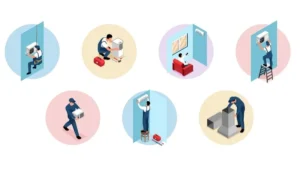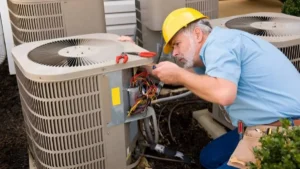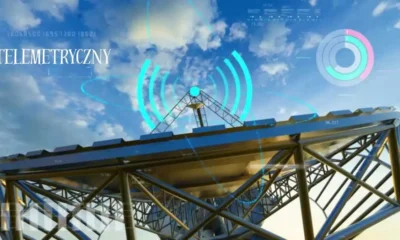HOME IMPROVEMENT
Repairing YEX382V3YTE Air Conditioner: A Comprehensive Guide

YEX382V3YTE air conditioner is a contemporary air conditioning equipment that enjoys functionality and looks. It has high cooling capacity, high efficiency, and other special features that include an inverter and smart controls among others. Knowledge of these features is especially useful when it comes to the identification and subsequent removal of problems with the device. The inverter technology ensures that the device uses appropriate power depending on the refrigeration requirements of the room a factor that is complemented with smart controls that enable the user to monitor the system and make adjustments remotely. Knowledge of the existence of these elements aids in the diagnosis of problems with a design and the provision of solutions where necessary.
Common Issues with the YEX382V3YTE Air Conditioner
- Non-cooling or Insufficient Cooling: They are typically due to refrigerant leakage, unclean filters, or faulty compressors.
- Poor Airflow: Due to such things as clogged filters, faulty fans, or blocked ducts.
- Electrical Malfunctions: For instance, tripped circuit breakers, faulty capacitors, wiring matters, or problems with the circuits among others.
- Unusual Noises: Such as growling, shaking, or buzzing noise, which may suggest some sort of mechanical issue or loose screws.
- Water Leakage: Common issues consisting of blocked condensate drains or problem drain pans.
- Frozen Coils: In most cases resulting from inadequate airflow or low levels of refrigerant.
Basic Troubleshooting for the YEX382V3YTE Air Conditioner
- Check the Power Supply: Check to see if the unit is connected to a power source and that the circuit breaker of the unit has not been tripped. Make sure the power switch is set to ‘ON’.
- Inspect the Air Filter: A dirty air filter can block air from entering and this will lead to poor cooling. Take out the filter, and while some can be washed if they are of that type, most have to be disposed of and the new one put in place.
- Examine the Display Panel: Look for any figures, that signify particular problems about your car, on the lights around the check engine module. For the meaning of these codes, please look further into the user manual.
- Reset the Unit: It has been observed that basic problems can be solved through only a restart of the system. Switch off the unit and allow it to cool down for a few minutes before you switch on the unit again.

Fixing Airflow Problems in the YEX382V3YTE Air Conditioner
Cooling is all about airflow, and therefore, adequate airflow is required at all times. The first step for remedying the airflow problem is to clean or replace the air filter. When the filter becomes clogged, the air that enters the unit is limited, therefore limiting the cooling effect enjoyed in the room. Then, it is recommended to observe the fan of your system, the indoor fans, and also the outdoor fans, and ensure that they are not blocked in any way and that they are firm and not damaged. Check that the blades are free from dust and are in the right working condition. If the fan motor has a problem then it must be replaced with a new one. Also, check for the presence of any leakages or obstructions constituting airflow in the ducts. Check for leaks and make sure that the ducts are clean to get proper ventilation.
Repairing Electrical Problems in the YEX382V3YTE Air Conditioner
Some problems involve electrical matters, and these may affect the flow of your yex382v3yte air conditioner. First of all, start with the circuit breakers to confirm if the unit is getting electricity supply. If any circuit breakers have been tripped or if any fuses have been blown, then they should be reset or replaced as required. Examine capacitors and contactors since they are subject to degeneration with usage over a certain period. Use a multimeter to test these components and change them if they are damaged. Check all devices for any wiring connections that seem to have been affected by physical damage or by rust. Secure spots of accessible connections and replace faulty wires to have proper electric properties.
Thermostat Issues
A faulty thermostat shall thus cause incorrect temperatures and unsuitable cooling system operations. For a wise diagnosis of thermostat issues, what should first be done is to consult the manufacturer’s manual on how to set the thermostat appropriately. Also, check the temperature settings and the mode of the thermostat, if it is to the standard recommendations. If the recalibration process cannot solve the problem, then it will be important to seek a new thermostat. In this case, the selection criteria should be focused on the compatibility of the thermostat with your YEX382V3YTE model for proper functioning.
Compressor Failure
The compressor is a vital component for cooling. If it fails, the air conditioner will not operate correctly. Diagnose compressor issues using a multimeter to check for continuity. If the compressor shows no continuity, it may need replacement. Check for electrical issues to ensure the compressor is receiving power. If necessary, consult a professional technician for compressor replacement, as this task can be complex and requires specialized knowledge.

Tools and Equipment Needed
Another important aspect of repair processes, which cannot be overlooked, is the use of proper instruments/equipment. Some equipment used when testing includes a multimeter, which is used to test electric parts, and a refrigerant gauge used to measure the amount of refrigerant present, among other testing equipment that is used in the testing for leaks in the refrigerant. During general repairs, there are various hand tools that one may find useful; these include screwdrivers, pliers, and wrenches. Lubricants and cleaners are also related to the application of the working parts and cleaning of the components.
Preventative Maintenance for the YEX382V3YTE Air Conditioner
To avoid such problems and maximize the lifespan of your yex382v3yte air conditioning machine it is recommended that you exercise proper maintenance practices. To maintain good quality of air in the building clean or replace the air filters often so that air can circulate freely. Thus, it is essential to inspect and clean the evaporator and condenser coils of the refrigerator machine. Ensure the proper level of refrigerant, and if there are any, fix them as soon as possible. Appoint annual professional checkups so that problems may culled at their infantile stage when they are easy to diagnose.
How to Find a Reliable Technician for YEX382V3YTE Air Conditioner Repair?
It is therefore important that you find a technician who is reputable and can do a good job. Make sure that the technician is well-certified and licensed to handle air conditioning units. Check the customer feedback and the reviews of the specific technician. Request the contact information of the previous clients to confirm the experience and honesty of the technician. A qualified technician will repair your air conditioner and will also ensure that it is in good shape to serve its purpose effectively.

How Long Does a YEX382V3YTE Air Conditioner Last After Repairs?
The periods that my yex382v3yte air conditioner will last after different repairs depend on different factors. The process of repair and maintenance has a very important role in increasing the lifespan of the unit in question. Some of the ways it is possible to get a longer life of the unit include; proper care, servicing, and maintenance. Commonly, the frequency of use or number of operating hours, as well as its operating conditions, can also define its durability. When problems that relate to air conditioning are solved immediately and regular maintenance is applied, you will be able to reap the benefits of a durable and efficient system.
Repair vs Replacement: When to Replace Your Air Conditioner
To be able to decide whether to repair or replace your yex382v3yte air conditioner, consider the following factors so that you can make the right decision. The age of the unit is an important factor; it may be cheaper to replace the unit with a new one rather than attempt to repair it. A high frequency of repairs may be a signal that replacement is the best course of action in this case. Always balance the cost of repairing the current unit against the cost of acquiring a new unit and fairly consider possible efficiency that results from using a new model.
Conclusion
It means that you can use your YEX382V3YTE air conditioner efficiently by servicing and repairing it often. Therefore, if you stick to the outlined steps in this guide, then it will be easy to solve common problems, repair your AC unit, and even maintain it. In case of some simple problems you may try to solve them on your own while for the complicated ones it is better to turn to the professionals but no matter what if you take proper care you will be able to enjoy the comfortable temperature in your house and make your air conditioning system last longer.
Did you find this article helpful? Check out the rest of our blog now!
-

 BIOGRAPHY7 months ago
BIOGRAPHY7 months agoBehind the Scenes with Sandra Orlow: An Exclusive Interview
-

 HOME1 year ago
HOME1 year agoDiscovering Insights: A Deep Dive into the //vital-mag.net blog
-

 HOME1 year ago
HOME1 year agoSifangds in Action: Real-Life Applications and Success Stories
-

 BIOGRAPHY1 year ago
BIOGRAPHY1 year agoThe Woman Behind the Comedian: Meet Andrew Santino Wife




























